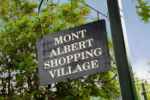VEGETATION
Grassy Woodlands
Recent detailed botanical
studies across Whitehorse were carried out at Antonio Park (Whitehorse Rd) (1987), Wattle Park (1992) and Highbury Park (2006).
These studies were linked to areas of historical significance, and the conclusions
drawn were that the pre-European landscape was either woodlands or forests.
These comprised grassy woodlands in the south-east of Whitehorse, around the Canterbury/Elgar Rds area and between
Elgar and Warrigal Rds.
It is believed that
these were extensions of the grassy woodlands which covered the land west to the CBD.
Forests
Grassy woodlands covered
only a relatively small area of the Whitehorse area - the remainder was mainly forest.
These forests were in the areas to the west of Station St, north to Koonung Creek and south to Gardiner’s Creek.
Examples of these forests survive in Highbury Park and the Wandinong Sanctuary
(Canterbury Rd, Blackburn)
FAUNA
Prior to European settlement,
Whitehorse was home to a variety of mammals, birds, reptiles, amphibians, invertebrates and fish.
The population included platypus, kangaroos, wallabies, echidnas, koalas, possums,
bettongs, wombats, water rats, and bats.
Studies
made of bird populations in the 1890s revealed 106 native species in Whitehorse, and many in the valleys of the Koonung and
Blackburn Creeks.

